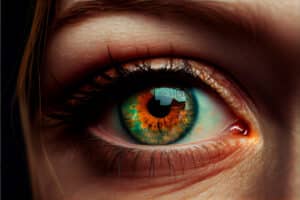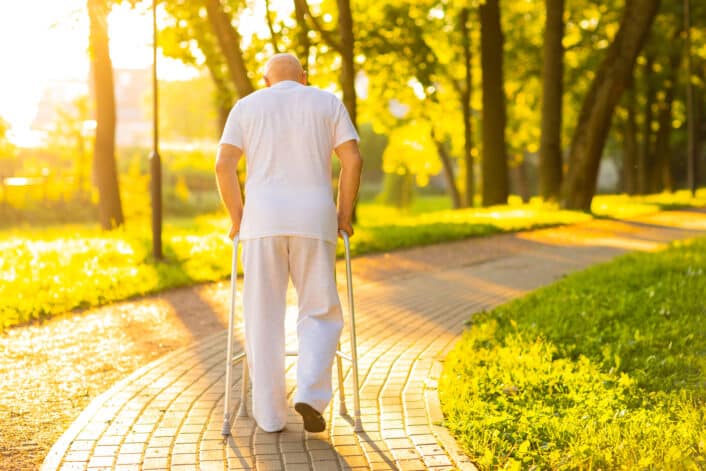

Disclaimer: This article is for informational purposes only and is not intended for diagnostic use. LifeDNA does not provide diagnostic reports on any traits discussed. Genetics is just one piece of the puzzle; please consult a healthcare professional for comprehensive guidance on any health condition.
Not every tremor is simply a sign of getting older. For more than 10 million people worldwide, those subtle shakes and muscle stiffness are early clues to something more specific, the scared Parkinson’s disease. While it is most often linked to aging, commonly starting after age 60, it may, in rare cases, show up in someone much younger, especially when there’s a strong family connection.
As the second most common degenerative brain condition, understanding who Parkinson’s disease more likely affects is important for prevention, early detection, better treatment options, and improving quality of life for those living with this condition..
Parkinson’s disease is a condition that affects the brain and causes problems with movement. It starts manifesting when nerve cells in the brain structure called the basal ganglia start to break down. Normally, these nerve cells make a chemical called dopamine that helps the brain send clear signals to muscles so your movements are smooth and controlled.
When the nerve cells in basal ganglia, especially those in substantia nigra, are dying , moving becomes harder, slower, and sometimes shaky. Parkinson’s disease usually gets worse over time and can also affect how people think, feel, sleep, and take care of themselves. Parkinson’s doesn’t just affect movement. It can also change your mood, memory, sense of smell, and even how you sleep or digest food.
Scientists don’t know exactly what the main cause of Parkinson’s is, why these brain cells start to die, but they have found a few reasons that can increase the chance of getting Parkinson’s. One reason is related to a specific protein in the brain. In Parkinson’s disease, a protein called alpha-synuclein starts to fold the wrong way and clumps together inside the brain cells. These clumps can harm or kill the cells, making the disease gradually worse.
Genetics can also play a role, as genes are providing instructions inside our body for making proteins and how they should function. Some people may inherit rare genetic changes called mutations in certain genes that can raise their risk of Parkinson’s. Besides inherited factors, the environment also plays a role. Being around harmful chemicals for a long time may damage brain cells and increase the chance of Parkinson’s, especially if someone already has genetic factors that make them more vulnerable. However, exposure to these chemicals alone doesn’t guarantee someone will get the disease, it’s usually a mix of genetic and environmental factors working together.
Scientists have found six main genes that may contribute to inherited forms of Parkinson’s. The genetic variations or mutations in these genes follow two types of inheritance patterns, autosomal dominant and autosomal recessive. In autosomal dominant cases, only one copy of the causal gene from either parent is enough to cause Parkinson’s.
Two of these genes are SNCA and LRRK2. The SNCA gene makes a protein called alpha-synuclein. When this gene is changed, the protein can build up in brain cells and damage them. This was the first gene ever linked to Parkinson’s and is known to cause early symptoms. The LRRK2 gene helps cells deal with stress. A change in this gene can disrupt that function and lead to Parkinson’s.
Other four genes playing a role in Parkinson’s are Parkin, PINK1, DJ-1, and ATP13A2, all of which are involved in autosomal recessive Parkinson’s. This means a person needs to inherit two changed copies of the gene (one from each parent) to develop the disease. Parkin helps clean up damaged proteins in cells. When it doesn’t work right, toxic waste builds up and harms brain cells. This often causes Parkinson’s at a younger age. PINK1 works with Parkin to protect the cell’s energy centers called the mitochondria, and mutations in this gene can also cause early-onset PD. DJ-1 helps protect cells from stress, and if this gene doesn’t work properly, the brain may be more easily damaged. Finally, ATP13A2 helps manage certain metals in brain cells, and changes in this gene can lead to more serious forms of Parkinson’s, including memory and balance problems.
Several studies have looked at more common genetic differences that don’t directly cause Parkinson’s but can raise the chances of developing it. These are called genetic risk factors. Scientists use a method called genome-wide association studies (GWAS) to look at hundreds of thousands of tiny genetic changes called SNPs. By comparing people with and without a disease, they can find which genetic changes are more common in those with the disease. These clues point to several different parts of the DNA that may play a role in Parkinson’s. Some earlier studies (so called gene candidate studies) have focused on specific genes they believed might be important, but not all of those findings held up in later research with larger data sets.
Understanding the genetics of Parkinson’s helps scientists learn how the disease starts and who are more likely to get it and how. This knowledge may lead to better ways to diagnose, treat, and possibly prevent it. Genetic testing may not be necessary for everyone, but it can be helpful if someone develops Parkinson’s at a young age or has a strong family history of the disease. As research continues, also novel treatments based on genetics may be developed in the future.
Parkinson’s disease can look different in each person, but some symptoms are common due to the brain losing its ability to control movement smoothly. Here are the main signs to watch for:
Each of these symptoms happens because the brain’s dopamine levels drop, weakening the communication between the brain and muscles. This causes the movement problems that are common in Parkinson’s disease.
Diagnosing Parkinson’s disease can be challenging because there isn’t a single test that can confirm it. Doctors usually use a combination of methods, including:
Sometimes, symptoms of Parkinson’s can look like those of other diseases, so doctors must carefully rule out other possible causes before confirming the diagnosis.
Currently, there is no known way to completely prevent Parkinson’s disease, partly because the exact cause isn’t fully understood,.However, some lifestyle choices and habits might help lower the risk by supporting brain health:
Even though Parkinson’s can’t be fully prevented, these habits can support your brain’s health and improve quality of life.
There’s no known cure for Parkinson’s. However,, there are many treatments that may help manage symptoms and improve quality of life.


